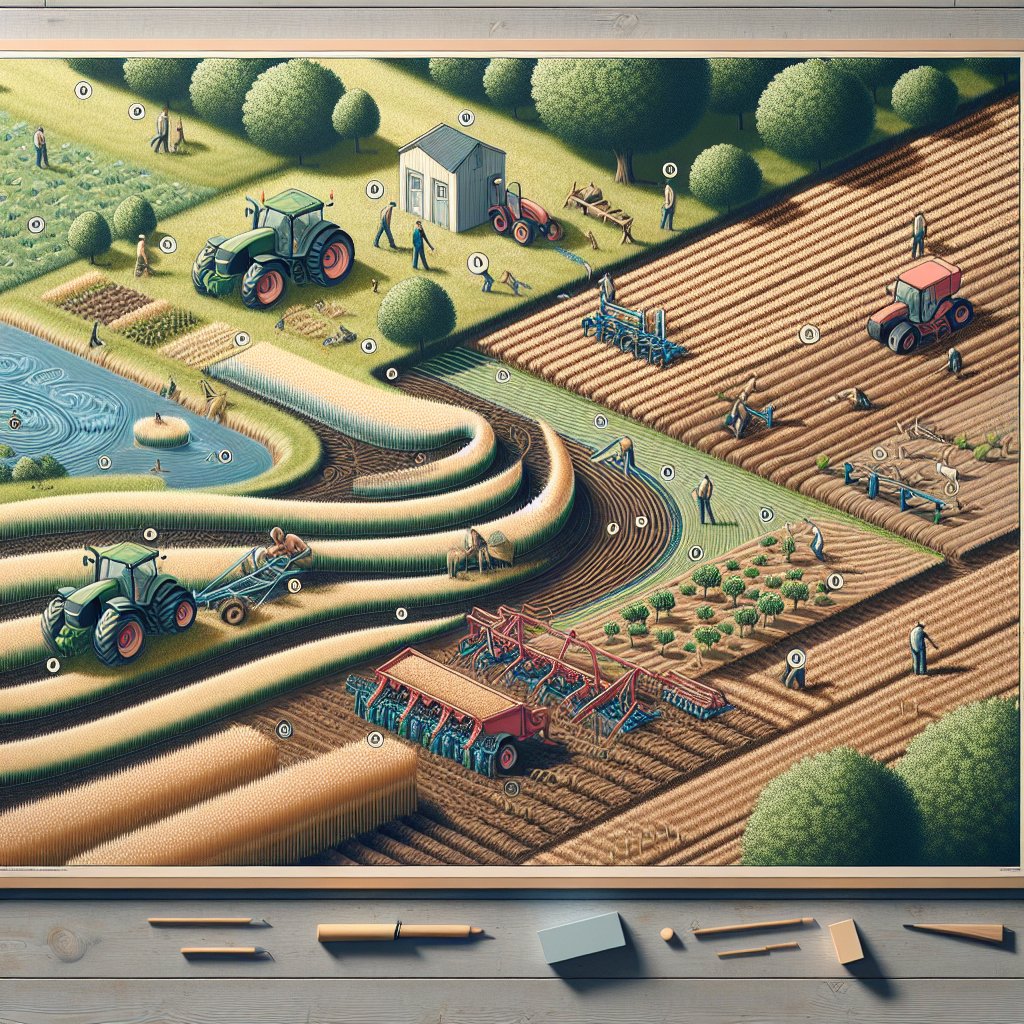
Soil erosion is a significant challenge in agriculture, leading to the loss of fertile land and negatively impacting crop yields. Agroecology offers a range of techniques that can effectively reduce soil erosion while promoting sustainable farming practices. This article explores various agroecological methods that can be employed to combat soil erosion and enhance soil health.
Understanding Soil Erosion and Its Impact
Soil erosion is the process by which the top layer of soil is removed by natural forces such as wind and water. This phenomenon can be exacerbated by human activities, particularly in agricultural settings where land is often left bare and vulnerable. The consequences of soil erosion are far-reaching, affecting not only the immediate area but also the broader environment.
One of the primary impacts of soil erosion is the loss of nutrient-rich topsoil, which is essential for plant growth. Without this layer, crops struggle to thrive, leading to reduced agricultural productivity. Additionally, eroded soil can clog waterways, leading to sedimentation that harms aquatic ecosystems and reduces water quality. The economic implications for farmers are significant, as they face decreased yields and increased costs for soil amendments and erosion control measures.
Agroecology: A Sustainable Approach to Soil Conservation
Agroecology is an approach to farming that emphasizes ecological principles and the integration of natural processes into agricultural systems. By adopting agroecological techniques, farmers can reduce soil erosion while enhancing biodiversity and improving resilience to climate change. Below are some key agroecological practices that can help mitigate soil erosion.
Cover Cropping
Cover cropping involves planting specific crops, such as legumes or grasses, during the off-season when main crops are not being cultivated. These cover crops protect the soil from erosion by providing ground cover, reducing the impact of raindrops, and improving soil structure. Additionally, cover crops can enhance soil fertility by fixing nitrogen and adding organic matter to the soil.
Contour Farming
Contour farming is a technique where crops are planted along the natural contours of the land, rather than in straight lines. This method helps to slow down water runoff and encourages water infiltration into the soil, reducing erosion. By following the natural shape of the landscape, contour farming minimizes soil disturbance and helps maintain soil integrity.
Agroforestry
Agroforestry integrates trees and shrubs into agricultural landscapes, providing multiple benefits for soil conservation. The roots of trees and shrubs help to stabilize the soil, reducing erosion caused by wind and water. Additionally, the canopy of trees can reduce the impact of raindrops on the soil surface, further preventing erosion. Agroforestry systems also enhance biodiversity and provide additional income streams for farmers through the production of timber, fruits, and other forest products.
Mulching
Mulching involves covering the soil with organic or inorganic materials, such as straw, wood chips, or plastic sheeting. This practice helps to protect the soil from erosion by reducing the impact of raindrops and wind. Mulching also conserves soil moisture, suppresses weeds, and adds organic matter to the soil as the mulch decomposes.
Implementing Agroecological Practices: Challenges and Opportunities
While agroecological practices offer numerous benefits for soil conservation, their implementation can present challenges for farmers. Transitioning to agroecological systems may require changes in management practices, additional labor, and initial investments in new equipment or materials. However, the long-term benefits of improved soil health, increased resilience to climate change, and enhanced biodiversity can outweigh these initial challenges.
Education and support from agricultural extension services, government programs, and non-governmental organizations can play a crucial role in facilitating the adoption of agroecological practices. By providing training, resources, and financial incentives, these entities can help farmers overcome barriers and successfully implement soil conservation techniques.
Conclusion
Reducing soil erosion is essential for sustainable agriculture and environmental health. Agroecology offers a holistic approach to soil conservation, integrating ecological principles into farming practices. By adopting techniques such as cover cropping, contour farming, agroforestry, and mulching, farmers can effectively combat soil erosion while enhancing soil health and productivity. As the agricultural sector continues to face challenges related to climate change and resource depletion, agroecology provides a viable path forward for sustainable and resilient farming systems.

